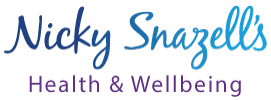Pain can be a result of injury, but in many cases how much pain we feel is a consequence of the decisions we make through our lives and is governed by our beliefs. How we deal with life's challenges, what we choose to eat and drink, including the quality of antioxidants and minerals, how much effort we put into exercise, posture and weight control, how much sleep we give ourselves - all these are choices of which we are in control.
Unfortunately, most of us make choices which will at some point promote pain. Fortunately, the body is always attempting to regulate pain impulses and heal. With knowledge we can work with, rather than against this process and feel less pain.
How Do We Feel Pain
We have a myriad of tiny receptors all over our body, which pass information to sensory nerves and then to the spinal cord. The pain impulse continues up the spinal cord to the thalamus in the brain, which acts like a router and in effect makes 'phone calls' to three other parts of the brain:
- Sensory Cortex interprets nature of pain
- The mammalian Amydala assesses level of fear/emotion and decides if parts of the body need to shut down to prioritise fight or flight.
- The Cortex is the human part of the brain which finalises the decision process
Hence our brains really do decide, like a panel of judges, how much pain is appropriate for us to experience at any time. Pain is then translated into how much we hurt.
Although we naturally want to avoid pain, this acts as important and in some cases, critical feedback. Pain is a warning signal that something is wrong and should stimulate a response to change activity, not to repeat the cause of the pain. Thus if something is wrong and we block the pain, the risk is that we could continue an activity that harms us.
Pain Gate
Imagine you are driving a slow, small car and you are waiting to turn onto a highway and big lorry after big lorry goes past and stops you continuing your journey.
Now translate that analogy, this time the pain signal being the car and other, more powerful signals being the lorries. If we can provide a continuous supply of powerful signals the pain never gets out to the spinal cord and up to the brain.
This is called pain gate theory and goes some way to explaining how and why we can reduce pain. What's the first thing you do if you hurt your hand in some way? Most of us will shake it. This sends stronger signals to the brain than the pain and so blocks the pain.
Endorphins - The Body's Natural Pain Killer
Endorphins are released at the point where the pain signals reach the spinal cord and prevent more pain signals being released. It is this process which prevents pain getting through immediately, sometimes after a serious injury. This "endorphin rush" allows an athlete to persist through pain.
Ten Top Tips To Reduce Pain
1. Massage- nice sensations travel seven times faster than pain impulses and block the pain.
2. Acupuncture raises endorphin levels and blocks pain at the gate. Also, it can be linked to electro acupuncture to boost the long-term effect.
3. Nutritious food and supplements. The correct food products are required to make amino acids which are essential to pain-killing hormones. Minerals and anti-oxidants all reduce inflammation and boost the immune system. Too many carbs/sugars metabolise into pain products: reducing the calories reduces the pain. Less obesity - less pain. If the cell is healthy, nutrient-rich and properly hydrated, with few toxins, pain is an unwelcome guest.
4. Reiki and meditation are known to change the brain wave frequency and biochemistry. New research suggests the state of mind impacts DNA transcription and chronic pain. Self-healing methods like these can focus the subconscious mind on reducing both stress and pain.
5. Review your lifestyle and regulate levels of stressful/fearful activity will boost positive emotional activities. Understand your natural biorhythms to make the best of your time awake. - makes you more productive and less stressed
6. Improving your posture, especially sitting, enables the large core muscles to take a load off the back.
7. Taking regular exercise boosts feel-good pain-killing endorphin levels, boosts metabolism, and helps to reduce obesity - fat cells store toxins and enhance pain. Many studies prove correct exercise significantly reduces painful chronic illness and mortality.
8. Tens is a portable hand-held, the medically-endorsed device that sends frequencies, 2HZ to 150HZ, through the sensory nerves to block the pain gate and boost happy biochemistry, such as serotonin and endorphins to kill pain, reduce depression and help sleep. The Tens electrodes can be placed along a nerve root and onto a painful point, or on to specific acupuncture points. With professional guidance, good quality Tens can significantly boost the effects of pain treatment.
9. Consider hypnosis. This fascinating and controversial subject can significantly reduce pain when practised by an experienced therapist. People have even had surgery whilst under hypnosis
10. A warm bath with alkaline salts and aromatherapy, especially lavender, helps with sleep. For more on sleep tips, read this article.
For more information about Nicky Snazell's Pain Relief Clinic, call 01889 881488 or visit www.painreliefclinic.co.uk

